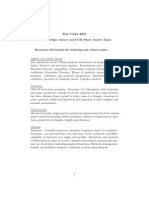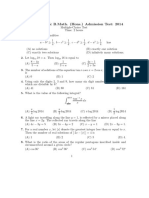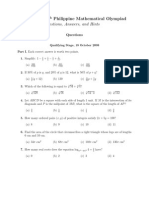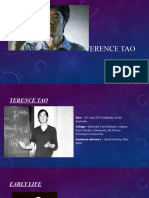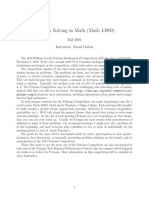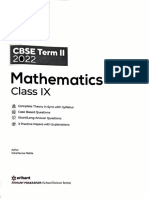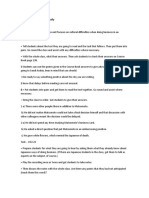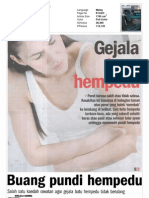Program for Inducing Mathematical Excellence
Final Exam
27 October 2017
PART I. Choose the best answer. Each correct answer is worth two points.
1. Which of the following choices is the largest?
(a) 1216 (b) 1212 (c) 518 (d) 242
2. In triangle ABC, AB = 6 and BC = CA = 5. Which of the following statements are false?
(a) Triangle ABC is acute, but if AB = 8 instead, it would be obtuse.
(b) Of the triangle’s angles, the one with the largest measure is ∠BCA.
(c) The value of tan ∠ABC is greater than 1.5 but less than 2.
(d) The area of triangle ABC is numerically equal to three-fourth its perimeter.
3. Ankan flips six fair coins. What is the probability he gets more than three heads?
11 1 21 13
(a) (b) (c) (d)
32 2 32 16
4. Each of 6 people picks another person among them as their giftee, and no two people pick the
same giftee. Everyone holds a nametag with their name on it. In a single move, each person gives
the nametag they’re holding to their giftee. After several moves, everyone holds their own nametag
again. What is the minimum number of moves needed to ensure this?
(a) 12 (b) 60 (c) 120 (d) 144
5. Points I, A, and N are outside regular octagon P ROBLEM S such that P IAN O is a regular
pentagon. What is m∠ROA?
(a) 49.5◦ (b) 51◦ (c) 52.5◦ (d) 54◦
6. John is answering a question on his exam: “What interval is 50% to 65% of the maximum heart
rate of a 20-year-old?” John is given the following choices, and he knows the correct answer is one
of these. Which of these is the correct answer?
(a) [100, 130] bpm (b) [110, 140] bpm (c) [120, 150] bpm (d) [130, 160] bpm
4
7. Given that sin x + cos x = , what is the value of sin3 x + cos3 x?
3
29 17 13 22
(a) (b) (c) (d)
54 27 18 27
1
� 8. Class A has a boys and b girls, while Class B has x boys and y girls, where a, b, x and y are integers
such that 0 < a < x < b < y. Each pupil in Class A is paired with someone from Class B. No pupil
is in two different pairs. What is the maximum number of pairs with one boy and one girl?
(a) a + x (b) x + b (c) b + y (d) y + a
9. Suppose the roots of x3 + 20x + 17 = 0 are a, b and c. What is a3 + b3 + c3 ?
(a) −34 (b) −37 (c) −40 (d) −51
10. In the figure on the right (not drawn to scale), four gears are shown,
represented as circles. Gear A has radius 6, gear B has diameter 6,
gear C has circumference 6, and gear D has area 6. The first gear
is turned 90◦ . By how many radians does gear D turn?
√ √
π2 π 6π π2 π 6π
(a) (b) (c) (d)
2 2 4 4
11. Given that a, b and c are positive real numbers satisfying
ab + 2a + b = 13,
bc + 3b + 2c = 36,
ca + c + 3a = 32,
√
p+q r
then a can be written as for some integers p, q, r and s, where r is not divisible by the
s
square of a prime and p, q and s have greatest common divisor 1. What is p + q + r + s?
(a) 5 (b) 7 (c) 9 (d) 11
12. Each vertex of a regular pentagon is colored either pink, red, indigo, mauve or ebony. Two colorings
are the same if one can be rotated to obtain the other. Find the number of different colorings.
(a) 54 − 1 (b) 54 (c) 54 + 4 (d) 54 + 5
√ √ √ √ √ √
13. Which of the following choices is nearest to 3+ 8+ 15 + 24 + 35 + 48?
(a) 26.2 (b) 26.4 (c) 26.6 (d) 26.8
14. Five husbands and their five wives sit in a row. Exactly four wives are sitting next to their
respective husbands. In how many ways is this possible?
(a) 40 320 (b) 44 160 (c) 80 640 (d) 84 480
15. What is the remainder when 2017 + 1720 is divided by 21?
(a) 3 (b) 5 (c) 15 (d) 17
2
�PART II. Choose the best answer. Each correct answer is worth three points.
1. There exists distinct nonzero digits a, b and c such that the eight-digit number aaabbbb5 is the
square of the four-digit number ccc5. There are two possible values for a. What is their sum?
(a) 5 (b) 9 (c) 13 (d) 17
2. In the figure on the right, OA0 = OA1 = 1, and ∠A0 OA1 = 90◦ . First,
Bobby draws a circle tangent to OA0 at A0 and to OA1 at A1 . For each
positive integer n, Bobby then draws:
a) a ray OAn+1 such that 2∠An OAn+1 = ∠An−1 OAn , and
b) a circle tangent to OAn at An and to OAn+1 at An+1 .
Which of the following choices is closest to the sum of the areas of the
infinitely many circles Bobby draws?
(a) 1.17π (b) 1.23π (c) 1.29π (d) 1.35π
√ √
3. Two circles, both radius 2, have centers 3 − 1 apart. What is the area of their common region?
√
5π 1 4π 1 7π 3
(a) −1 (b) 2π − (c) − (d) −
3 2 3 2 3 2
4. Four people are trying to guess the location
� √ of �
a point X in the Cartesian plane. The guess closest
3 3
to X was (1, 0), the second-closest was 2 , 2 , the third-closest was (0, 0), and the farthest was
� √ �
1 3
2 , − 2 . Given this information, what is the area of the region where point X can be located?
√ √ √ √
3 3 3 3
(a) (b) (c) (d)
8 6 4 3
5. For a positive integer n, let f (n) = −1 if the sum of the exponents in its prime factorization is
3
�
odd, and f (n) = 1 if it is even. For example, f (1) = 1, f (5) = −1, and f (24) = f 2 · 3 = 1 since
3 + 1 is even. What is the sum of df (d) over all positive factors d of 6480?
(a) −22 506 (b) −2684 (c) 2684 (d) 22 506
20172
� �
6. For how many integers 0 ≤ k ≤ 20172 does 2017 divide ?
k
(a) 20172 − 2017 (b) 20172 − 2016 (c) 20172 − 1 (d) 20172
7. Polynomial P (x) has rational coefficients, degree 4032, and leading coefficient 20172 . The numbers
1 1 1
√ , √ ,..., √ are 2016 of its roots. What is the sum of its coefficients?
2 3 2017
1
(a) (b) 0 (c) 1 (d) 2017
2017
3
� 8. Evaluate the sum
log22 1 − 1 log32 2 − 1 log20172 2016 − 1
+ + ··· + ,
log22 2017 + log22 2017! log32 2017 + log32 2017! log20172 2017 + log20172 2017!
where the numerator is logn2 (n − 1) − 1 and the denominator is logn2 2017 + logn2 2017!, the sum
ranging from n = 2 to 2017.
(a) −2 (b) −1 (c) 0 (d) 1
9. Trapezoid ABCD has AB parallel to CD, AB = 25, AC = 20 and AD = BC = 15. Find its area.
(a) 128 (b) 144 (c) 180 (d) 192
10. How many ways are there to tile a 3 × 15 rectangle with 3 × 1 and 1 × 3 tiles? Rotations and
reflections are counted as different tilings.
(a) 162 (b) 171 (c) 180 (d) 189
PART III. All answers should be in simplest form. Each correct answer is worth six points.
1. Chris has 2018 matchsticks, and forms several digits with them,
using the pattern shown in the figure on the right. What is
the largest possible sum of the digits Chris can make?
2. In triangle ABC, let AB and AC be the reflections of A
with respect to B and C respectively. Define BA , BC , CA
and CB similarly. Find the ratio of the area of the hexagon
AB AC BC BA CA CB to the area of triangle ABC.
3. What is the sum of the prime factors of 3 200 021?
4. The function f : R → R satisfies f (1) = 0 and
f (x + y) + f (x − y) f (x + y) − f (x − y)
− 4x2 = − 4y 2
x y
for all nonzero x and y. Find the value of f (20) − f (17).
5. It is possible to write every positive integer uniquely as a proper sum like so:
8=1+1+2+4 81 = 1 + 2 + 2 + 4 + 8 + 16 + 16 + 32 15 = 1 + 2 + 4 + 8
A proper sum has consecutive powers of two, starting from 1. Every power of two in a proper sum
appears either once or twice. The following sums are not proper:
13 = 1 + 2 + 2 + 8 10 = 2 + 4 + 4 7=1+2+2+2
Let f (n) be the number of powers of two that appear twice in the proper sum of n. For example,
f (81) = 2, since 2 and 16 appear twice. Find the 70th smallest positive integer n with f (n) = 3.





